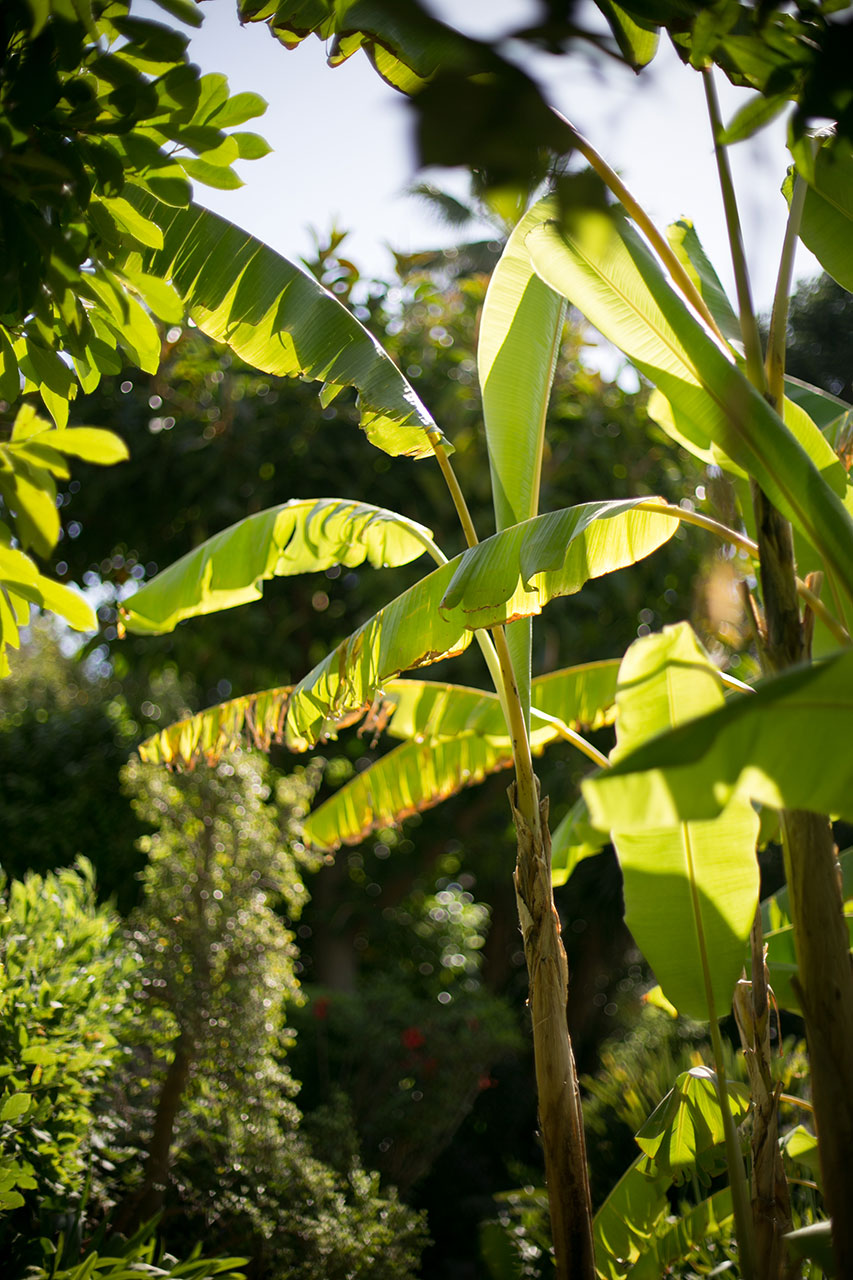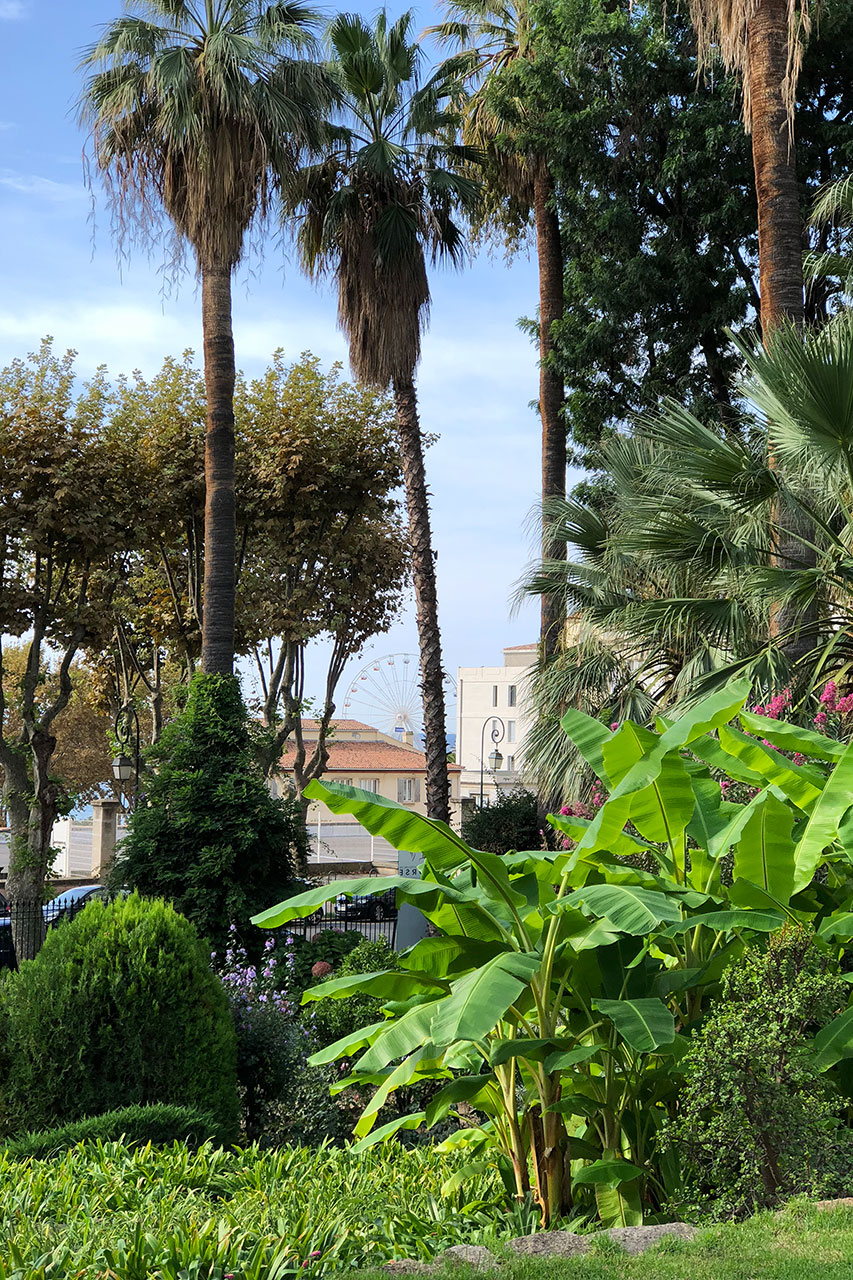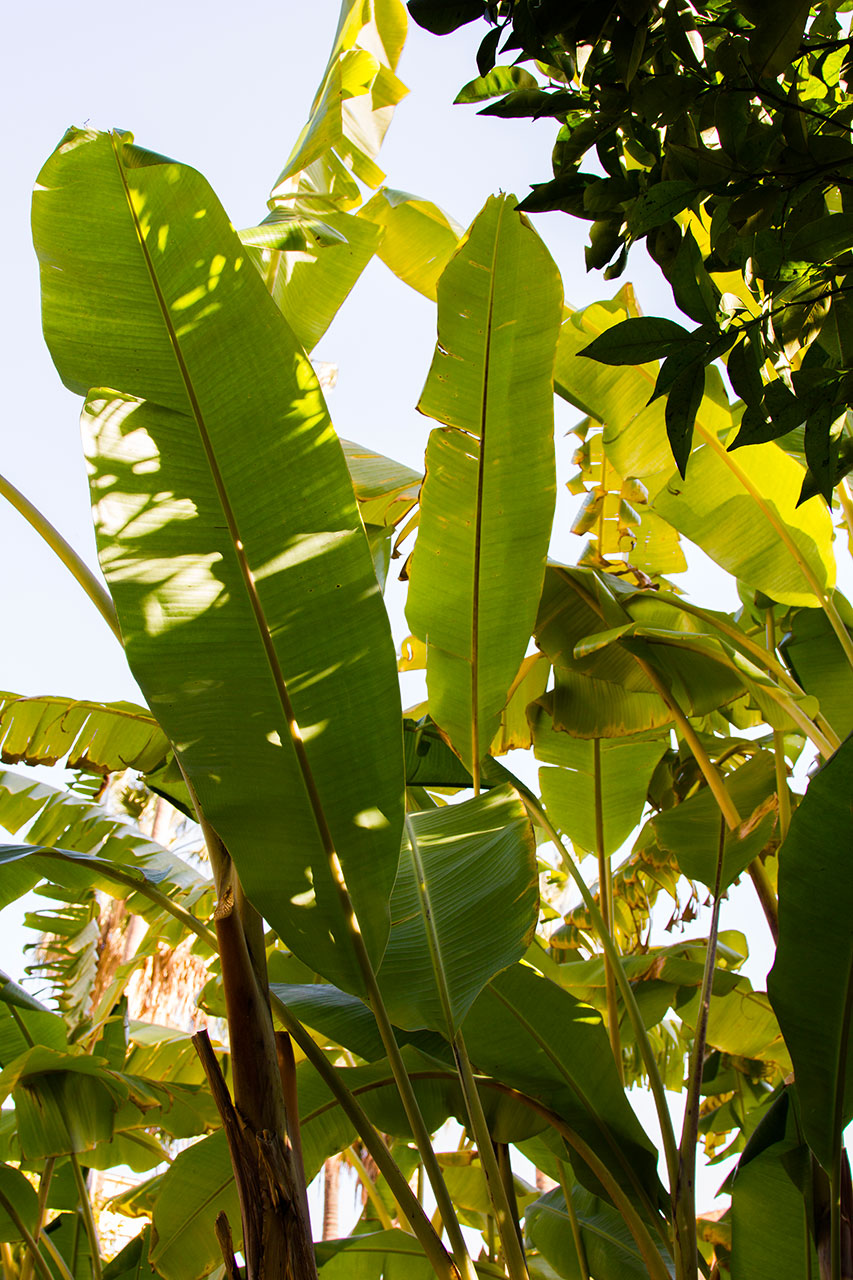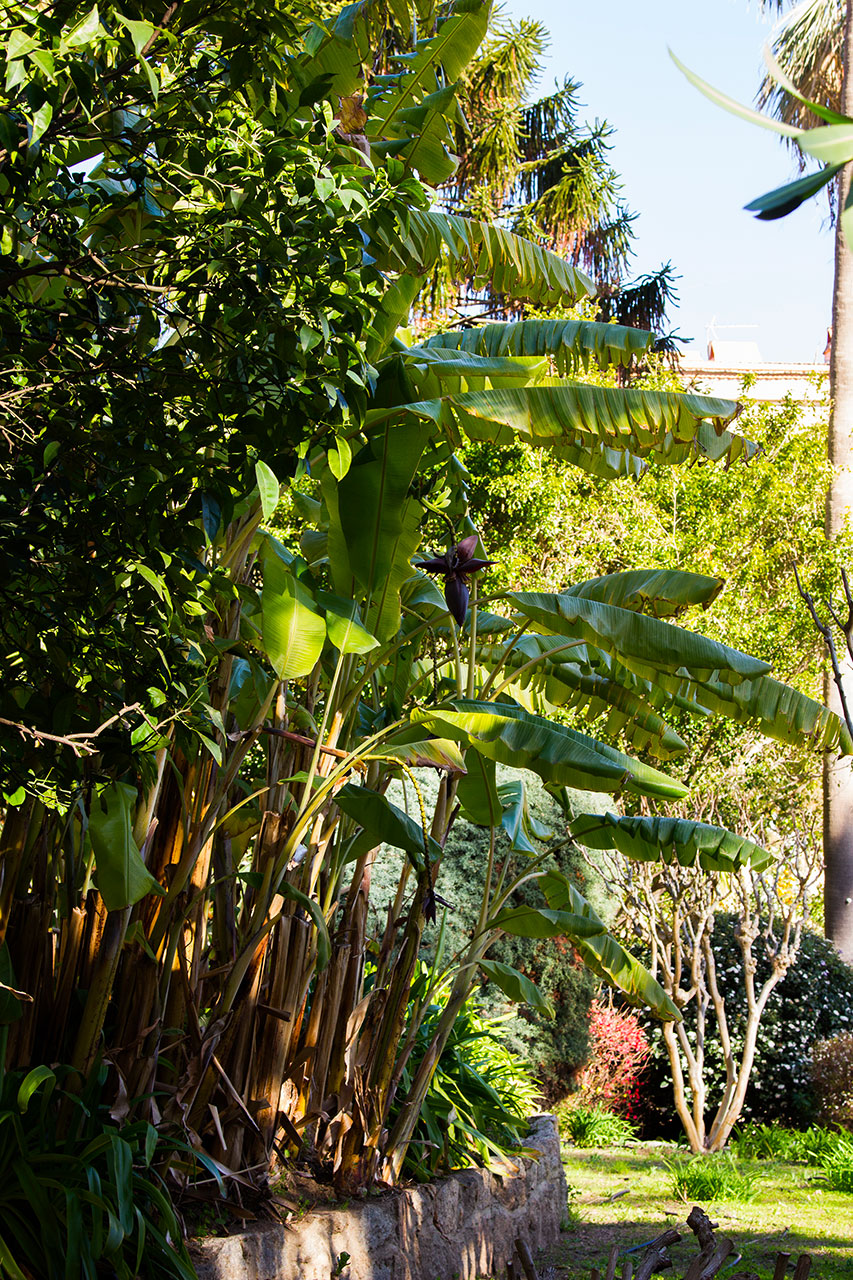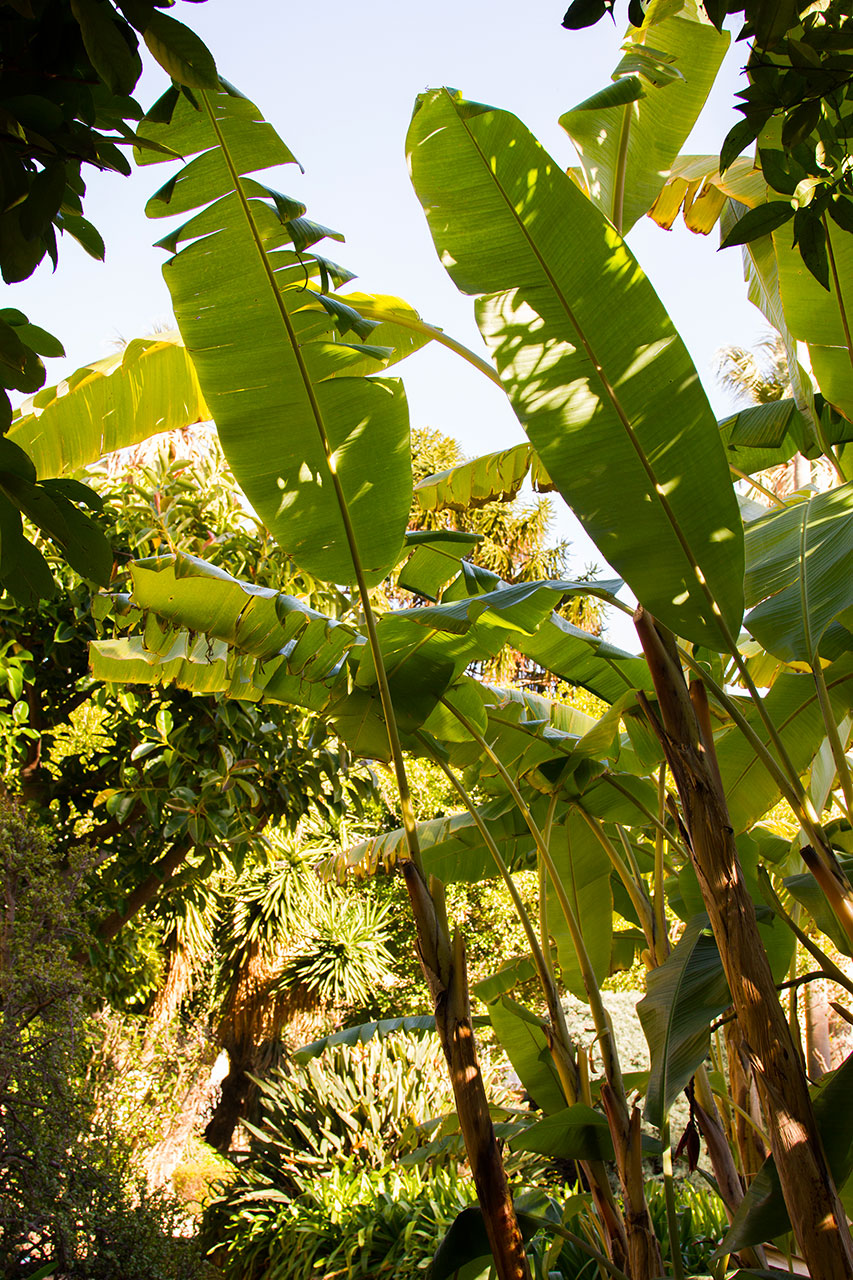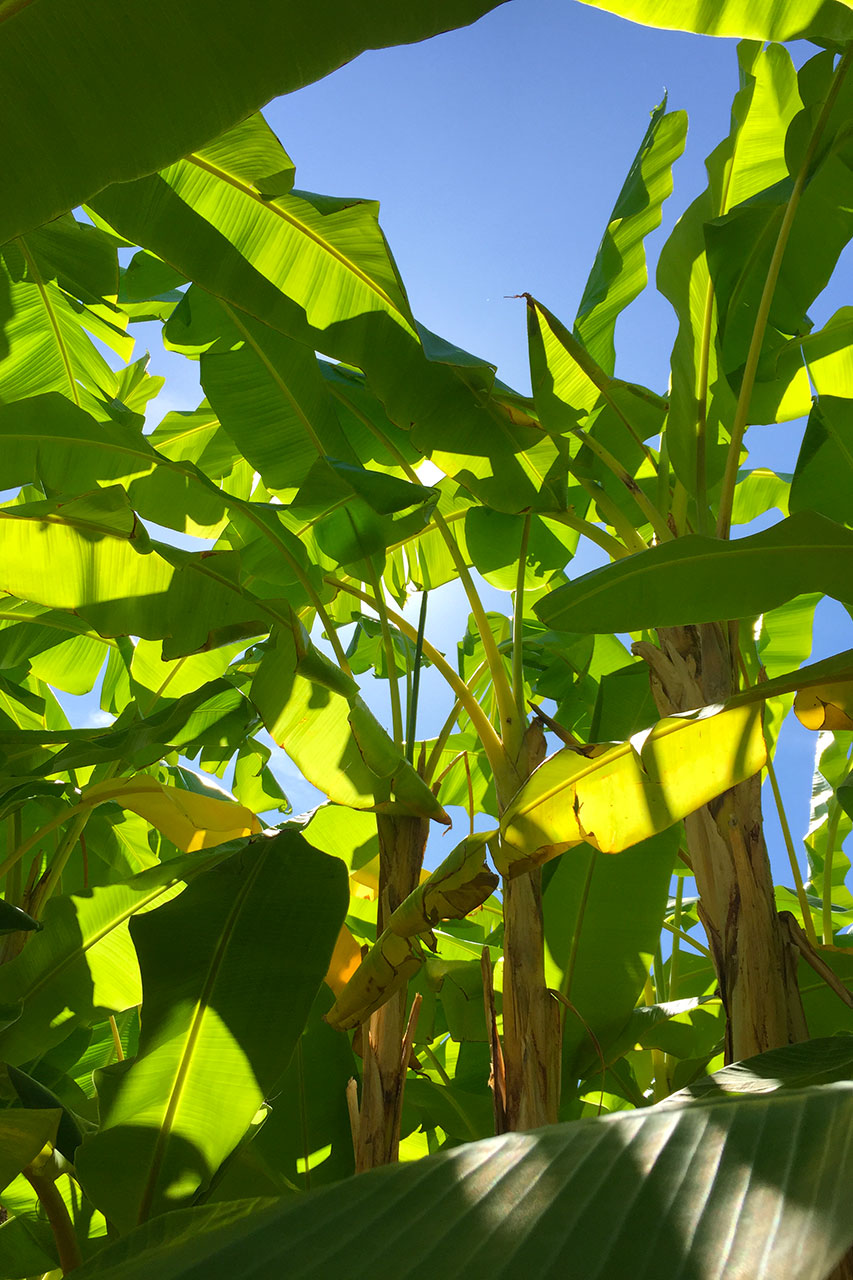
Banana tree
Musa paradisiaca
Its botanical name “Musa” is said to come from the Latinisation of the Arabic name for the banana “mauz, moùz, muz”. But botanist-naturalist Linnaeus discovered that it was the name of the Greek doctor to the Emperor Augustus, Antonius Musa. Its specific name paradisiaca means paradise, due to the exquisite form of its fruit and the beauty of its majestic leaves.
- Common name: Common Banana
- Corsican name: Bananieru
- French name: Bananier paradisiaque, Bananier des Sages, figuier d’Adam

Notes
Vivamus suscipit tortor eget felis porttitor volutpat. Donec sollicitudin molestie malesuada. Vestibulum ac diam sit amet quam vehicula elementum sed sit amet dui. Praesent sapien massa, convallis a pellentesque nec, egestas non nisi. Vivamus suscipit tortor eget felis porttitor volutpat. Donec sollicitudin molestie malesuada.
Vivamus suscipit tortor eget felis porttitor volutpat. Donec sollicitudin molestie malesuada. Vestibulum ac diam sit amet quam vehicula elementum sed sit amet dui. Praesent sapien massa, convallis a pellentesq
Species characteristics
Family: Musaceae
Origin: India, Indonesia.
Habitat: Hot and wet areas.
Characteristics: Herbaceous perennial with a pseudo-trunk whose underground part is the corm.
Its foliage is evergreen and thick, with large leaves having a strongly ribbed leaf blade.
Long inflorescences from 1 to 1.5 m. The female flowers form the base of the inflorescence, surrounded by hermaphrodite flowers, and at the tip, the male flowers. Pollination is mainly done by bats and also by hummingbirds.
Flowering period: Summer
Uses and properties: These plantains, rich in starch, are eaten as a vegetable, cooked, roasted, dried or ground into flour. It is the staple food in many tropical countries. The bananas that we eat are seedless hybrids. It is one of the first solid foods given to babies.
Its leaves are used to cover roofs or to pack food for transport.
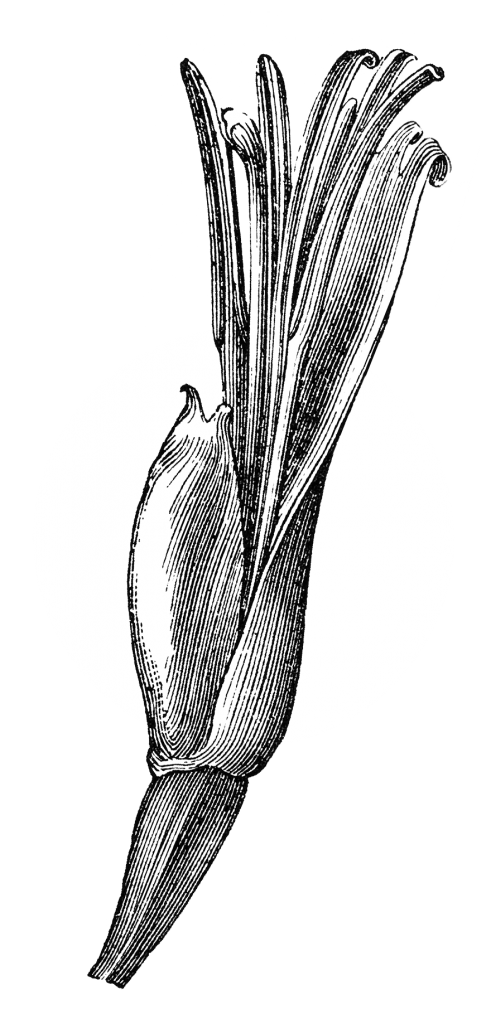
History and oddities
The name banana comes from its Hindustani name. In India it is sacred, considered to be the reincarnation of the goddess Parvati. Women wanting a boy, worship it during the month of Kartik (mid-October to mid-November).
Its French name of Adam’s Fig Tree comes from the belief that Adam wrapped himself in its large leaf when he left the garden of Eden.

